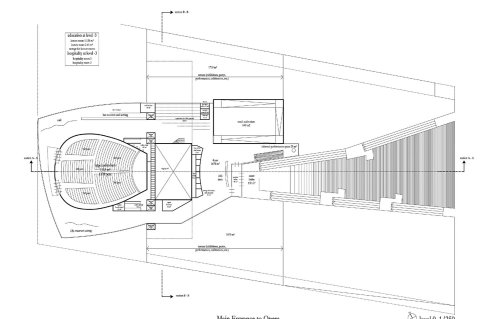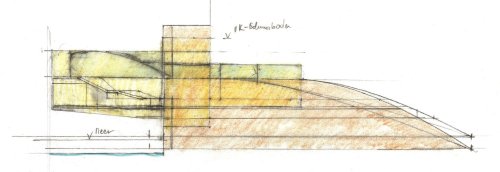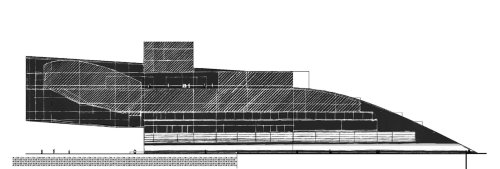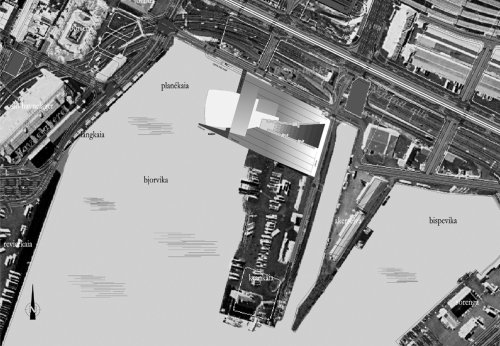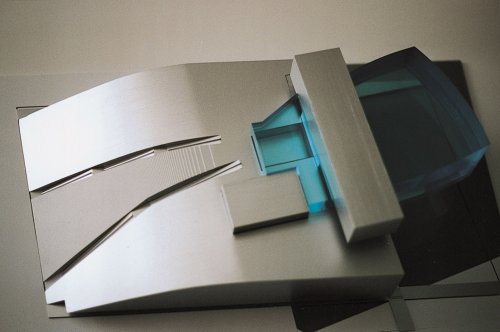Beyond Bjorvika - Opera Oslo
2000 Project
The New Opera House, the first in Norway, not only fulfills functional, constructive and formal requirements. A landmark tends to meet emotional criteria, quite like any other important architecture.
The criteria are hard to express verbally, such as surprise, longing and formal vitality. In accordance with the ethical functions of architecture, such an edifice should represent the creativity displayed by singers, actors and dancers and, further, the "playful" superiority of professionally practiced art over financial and political power. The allegorical function attached to the building and the view from above over the sea, the city and the countryside are the project fundamental concepts. This is why the Opera is accessible from a second urban plane thirty meters above Oslo. The axial access from the district of Bjorvika is tangent to the new Opera House at the foot of an equally impressive, yet constructively delicate, vaulted aluminum shell into which broad steps and pedestals have been integrated or escalators incised at different inclinations.
The escalators, moving walkways, steps and pedestals are nothing but a third-dimensional extension of the city's footpaths - and visitors going up with the escalators are shown successively different images of Oslo before they reach the terrace above the city, finally to experience themselves as observers of a greater entity. This second urban level is meant to serve various activities, such as open-air performances, exhibitions and festivals. Cut out of this level, the foyer leads to the large and small auditoriums, the rehearsal halls and the ballet school, altogether accommodated around the stage tower in the entrance level "wing". Visitors calling at the port and those who find it difficult to use the vertical footpath network are invited to use the stairways and elevators on the west facade, leading directly to the foyer.
The most impressive part of the foyer is corbelled out and surrounds the auditorium. This part is paned throughout and, being fully visible from outside, likewise allows a view in any direction. The foyer is leveled at the same height as the uppermost tier. Entering the auditorium, 1388 visitors find their seats by walking down the rows with a constant view on the stage. All the other functions of the Opera House, a "large belly", are accommodated beneath an aluminum shell.

